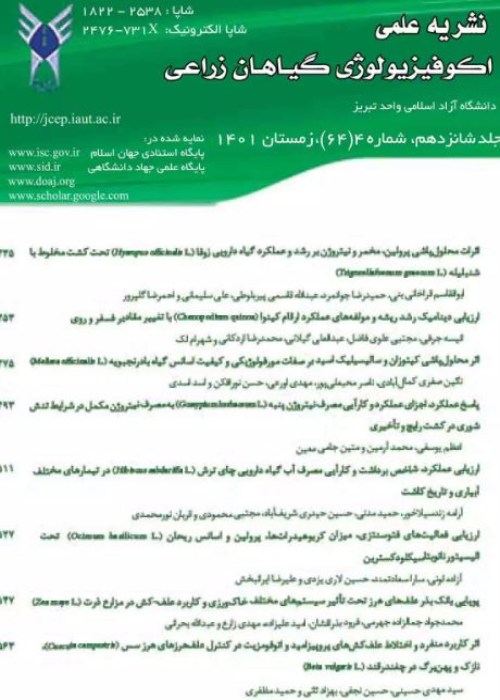Investigating Yield and Its Related Traits by Using Components Analysis of Different Varieties of Rapeseed (Brassica napus L.)
The physiological and phonological characteristics of different varieties and lines of rapeseed (Brassica napus L.) and also relationship between these traits and grain yield, 20 cultivars and lines of rapeseed were studied in a randomized complete block design with four replications for two years (2014-2016) at the High Educational Complex of Shirvan. During growing seasons, in addition to recording the phonological traits, destructive sampling and light measurement to calculate physiological traits like leaf area index, total dry matter and extinction coefficient were performed. At the end of the seasons, yield and its components, morphological traits and oil percentage of the cultivars were measured. Factor analysis was used to describe the relationship between the traits studied by using the mean of 21 attributes and the principal component analysis. The results of the analysis showed that the first four components justified a total of 99 percent of the total variations. The contribution of first and two components were 83.8 and 13.1 percent in the first year and 83.3 and 11.6 percent in the second year, respectively. Since the total values of the third and fourth components of the total changes in both years of the experiment are less than 4%, therefore the first two components which justified more than 96% of the variation were used to select the superior composition and the corresponding diagrams were drawn. Accordingly, varieties related to the positive direction of the first axis were varieties with high biological yield, high pod number, long flowering period and noticeable oil yield (Group A). In these varieties, seed filling is relatively shorter than the rest. In contrast, B-group varieties were against to the A- group's and were related to the negative direction of the first axis. On the other hand, varieties with high positive weight on the second axis were those with a high harvest index, a large number of pods per plant, which had longer time to stem elongation but shorter in planting to rosette (group C). The average yield of cultivars in the first year was 453.80 g.m-2 and in the second year 401.84 g.m-2. Part of the reduction in yield associated with the reduction of growth indices (biological yield) and the other part is related to the reduction of the harvest index, which it is due to significant differences of radiation between two years. As a whole it could be said that, three varieties of Bilbao, Traviata and Slm046 had the highest positive correlation with the first axis (group A).
- حق عضویت دریافتی صرف حمایت از نشریات عضو و نگهداری، تکمیل و توسعه مگیران میشود.
- پرداخت حق اشتراک و دانلود مقالات اجازه بازنشر آن در سایر رسانههای چاپی و دیجیتال را به کاربر نمیدهد.


